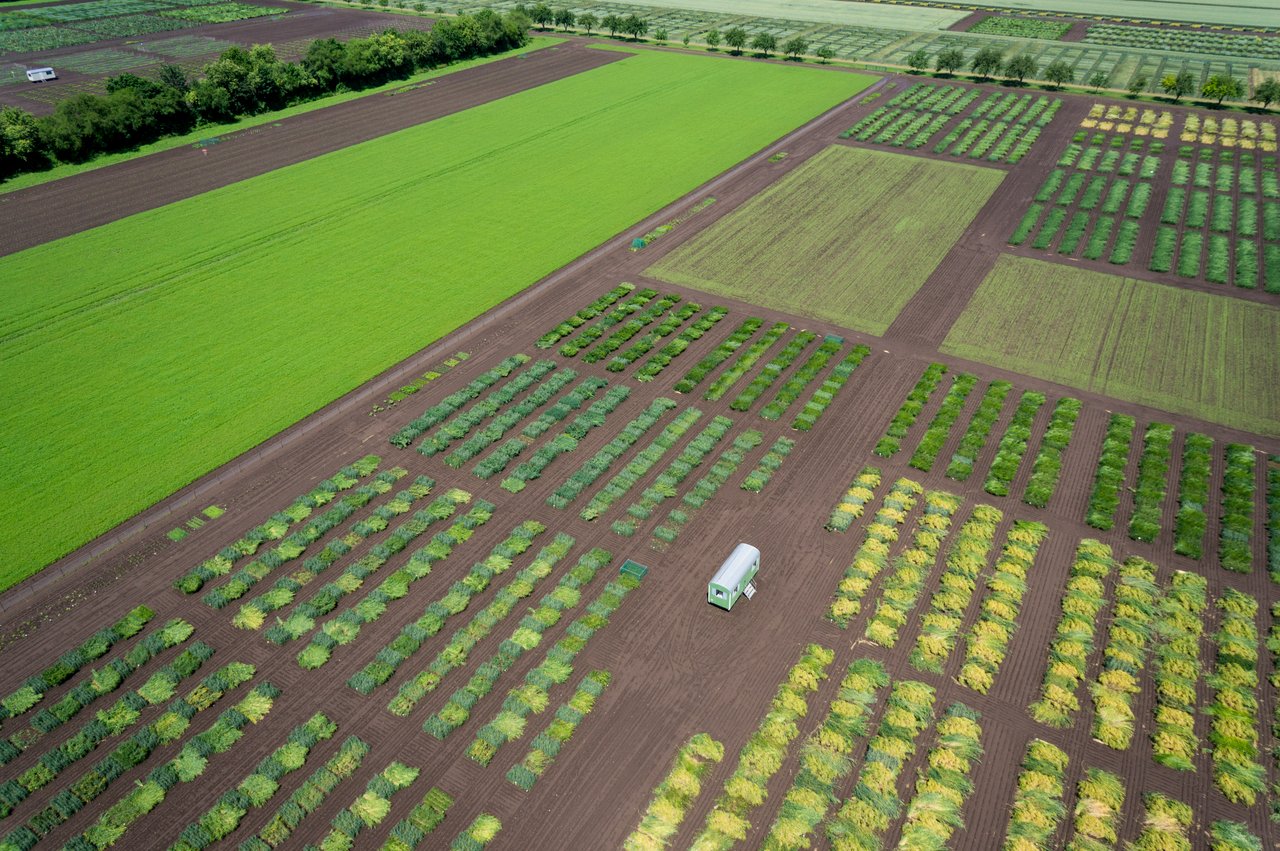Experimental fields
Experimental fields
Gatersleben is located in the northern foothills of the Harz Mountains, and lies on the edge of the Magdeburger Börde. The land surface lies between 109 and 112 m above sea level. The area falls within the rain shadow of the Harz Mountains, and has long been favoured as a site for plant breeding thanks to its comparatively low rainfall and mild temperature conditions.
From records collected over the period 1991-2020 by the Institute’s weather station, the mean annual precipitation is 499 mm and the mean air temperature is 9.6°C.
The campus is surrounded by hedges and small patches of woodland, which create a suitable microclimate for the maintenance of the Federal Ex situ Gene Bank collection. In all, 75-80 ha of arable land is used by the Institute, of which 60 ha lies within the campus, and the remainder is rented from landholders in the vicinity. The local soil is a fertile loess-loam, characteristic of the Börde, with a soil value of 80-97. The thickness of the strongly humic A horizon varies from 30-40 cm to 1 m.
The 18 ha experimental field "Selkenbreite", which is mostly dedicated to the growing out of Gene Bank materials, is managed using a five-field rotation system. The field is fenced to prevent damage caused by wild animals. Perennial crops are maintained as permanent plantings (3 ha), while bulb-forming crops as onion and garlic are cultivated in a separate 2 ha field, which is relocated every 4-5 years for phytosanitary reasons. Around 100 plots, distributed across the site, are sown to accessions of cross-pollinating Gene Bank species each year to achieve their reproductive isolation.
The remaining area is used to conduct field trials involving cereals (wheat, barley cereal rye and maize) and oilseed rape, following a three-field rotation system. Barley, oilseed rape, oats, sugar beet and various green manure species mixtures are grown as cover crops.
